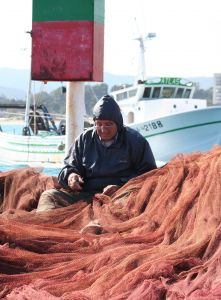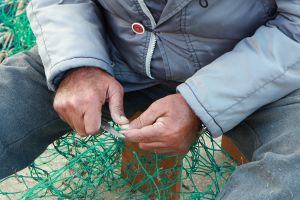Travel Tips
Volunteer Vacations: Paying to Travel, Work, and Save the Sea Turtles
 On her last volunteer vacation to Costa Rica, Julie Manis was tested to her limits while helping to save the Leatherback sea turtles. Here, she explores how would-be voluntourists can thoroughly vet a program before signing away their vacation time.
On her last volunteer vacation to Costa Rica, Julie Manis was tested to her limits while helping to save the Leatherback sea turtles. Here, she explores how would-be voluntourists can thoroughly vet a program before signing away their vacation time.
“That’s crazy.”
This was my friend’s response when I told him about a recent trip to Costa Rica, where I’d spent my vacation trying to help save endangered Leatherback sea turtles.
He got right to the point: “So wait a minute. People pay their way there. They work for free. And they also pay for the privilege?”
Trying to explain voluntourism to a pragmatic person isn’t easy.
Read about Julie’s volunteer journey in Costa Rica: How to Have a Better Volunteer Vacation Experience Than Mine.
It wasn’t that he didn’t understand the desire to help. Everyone is aware that the world is full of hunger and hurt, and that our planet itself is in dire need of care.
The truth is, local volunteerism is at an all-time high. VolunteerMatch.com recently reported that they’ve made more than 4 million referrals to people who have visited the site looking for ways help out in their community.
Even President Obama is encouraging American citizens to engage in volunteer service. Free work is the new donation. But Americans shouldn’t confuse volunteer trips with charity, at least as far as taxes are concerned. According to IRS publication 526, travel costs can be deducted only if there is no “significant element of personal pleasure, recreation or vacation in the travel.”
 But paying to work? And working during your vacation time? Some would say that smacks of workaholism. Of course, you’re not doing your own work, you’re in an interesting setting, and—given the right project—you have the opportunity to change, if not the world, at least a tiny part of it.
But paying to work? And working during your vacation time? Some would say that smacks of workaholism. Of course, you’re not doing your own work, you’re in an interesting setting, and—given the right project—you have the opportunity to change, if not the world, at least a tiny part of it.
Those who have ever considered becoming a voluntourist, have probably shared some of my friend’s concerns. “How are you sure they even know what they’re doing?” and, “All this money you’re paying—where does it go?”
Actually, it’s hard to know who’s doing what. The first thing to realize when looking for the right volunteer trip is the over-abundance of possibilities.
Google a country and the word “volunteer,” or even a specific interest, and you’ll be overwhelmed with hits. Does a fancy Web site with all the bells and whistles mean the charity has its act more together? Does a plain Web page mean it’s more sincere, giving more of the proceeds directly to the project? Both are silly ways to evaluate an organization, but it’s hard not to be swayed by a poignant photo.
Check out Top Voluntourism Opportunities for Teens.
Flyforgood.com is a great to place to begin searching for volunteer opportunities. Check out individual Web sites, then seek additional information. One way to spot possible problems with anyone is to Google the name, along with a word like “bad,” “sucks” or “scam.” Unhappy participants enjoy griping on the Internet. If you see a lot of entries, consider it a red flag. On the other hand, some people just have an ax to grind, so don’t blindly believe everything you read online. Trust your instincts.
 Many volunteer vacation companies don’t actually run the individual projects, but work in partnership with an on-site organization. Their expertise is, hopefully, evaluating worthwhile projects and helping to staff them with the right volunteers. Ask if they’ve placed other people on that particular project. Request references, not only to check on the group, but also to learn more about what you’ll be doing and what to pack.
Many volunteer vacation companies don’t actually run the individual projects, but work in partnership with an on-site organization. Their expertise is, hopefully, evaluating worthwhile projects and helping to staff them with the right volunteers. Ask if they’ve placed other people on that particular project. Request references, not only to check on the group, but also to learn more about what you’ll be doing and what to pack.
By volunteering through an established volunteer vacation agency, your trip may be easier and more secure. You can get travel advice, packing lists, insurance, discount programs, and most importantly, they can provide contacts within the destination country. Ask if the sponsoring organization has its own person on site, preferably a local. There have been horror stories about volunteers who go halfway around the world, only to find that there’s no one there to meet them and the project has been disbanded.
Find out how many volunteers are expected to be there, their ages and how long the average person stays. Be sure to ask how much you’ll be able to mix with the locals. Some projects are more social than others. If you’re looking to experience another culture or brush up on your language skills, chances are you’ll want to meet people besides other volunteers.
 Now pull out your credit card. Donating time and effort is fine, but you’ll also have to pay, and some trips can be costly. Before sending any money, ask how much of it actually goes toward the project. Don’t just settle for hearing the term “non-profit.” Some non-profit organizations have a large overhead and highly paid officers, while some for-profit organizations portion a generous percentage of their fees to the various projects.
Now pull out your credit card. Donating time and effort is fine, but you’ll also have to pay, and some trips can be costly. Before sending any money, ask how much of it actually goes toward the project. Don’t just settle for hearing the term “non-profit.” Some non-profit organizations have a large overhead and highly paid officers, while some for-profit organizations portion a generous percentage of their fees to the various projects.
Hopefully, some of the payment goes toward the needs and materials for your project. Many organizations give equipment instead of cash, believing that support and human assistance are what make a project sustainable in the long term. I-to-i.com, a voluntourism company that has partnered with over 500 projects, discovered that needs vary over time, and don’t always coincide with whatever project is the most popular. So they created their own charitable foundation to direct what is needed to where it’s needed, supplying everything from materials for the construction of a post-tsunami orphanage in Thailand, to a special incubator for baby pandas in China.
Done right, it can be a win-win situation. Voluntourism can help bring money into the homes of people who don’t work directly with the project, but care for the needs of the volunteers. Take, for example, the turtle project I worked with in Gandoca, Costa Rica, a tiny dirt road town in a banana-growing region on the Caribbean coast. They don’t have much.
Traveling solo in Latin America? Check out Julie’s Solo Travel Tips from One Woman’s Nicaraguan Journey.
Heck, they didn’t even have electricity until a few years ago. But what Gandoca does have are massive, nearly-extinct Leatherback sea turtles that nest on the beach at the end of their dirt road.
 A few decades ago, this meant turtle eggs, turtle meat, turtle oil, tortoise shell … you get the picture. Today poaching is illegal, and the locals make their living from the volunteers who help the turtles. Food, housing, tour guides, even doing laundry pays better than poaching turtle eggs. Last year the turtle project brought about $150,000 into the town. So in addition to the turtles getting help, the townspeople can better afford to take care of their families.
A few decades ago, this meant turtle eggs, turtle meat, turtle oil, tortoise shell … you get the picture. Today poaching is illegal, and the locals make their living from the volunteers who help the turtles. Food, housing, tour guides, even doing laundry pays better than poaching turtle eggs. Last year the turtle project brought about $150,000 into the town. So in addition to the turtles getting help, the townspeople can better afford to take care of their families.
When the project began 17 years ago, poaching of Leatherback turtle eggs was thought to be almost 100 percent, meaning no new turtles were being born. In the years that followed, the group has helped about 350,000 hatchlings make it into the ocean. An estimated 1 in 1,000 of these baby Leatherbacks will actually survive to mating age. All told, that’s about 350 turtles. Plus about 4,000 female Leatherbacks have been tagged, allowing scientists to study them and learn more about life on this planet.
Learn about other eco-travel experiences in this video: See and Save Endangered Animals on Vacation.
Even with anti-poaching laws, the Leatherbacks have trouble making their nests in safe places. Human poachers may be stopped, but dogs, crabs, birds, and other predators will always fancy the taste of turtle eggs. The Leatherbacks need the human volunteers to survive. This is never going to be a solve and save situation. You can teach a man to fish … but you can’t teach a turtle where to lay her eggs.
Perhaps those who benefit most are the humans who help out. In a setting so different from their ordinary lives, people learn new aspects of themselves. Students gain something special to put on their school applications; some even receive class credit.
The intercultural exchange is tremendous, since these turtles attract volunteers from all over the world. And volunteers, besides being schooled in the Way of the Leatherback, have an opportunity to work hard, exercise, breathe fresh air, eat a healthy diet and feel good about helping these amazing creatures. That’s the real pay.
By Julie Manis for PeterGreenberg.com. Visit Julie on the Web at Statscustom.com for fine custom-made shirts and JoyofBreathing.com to learn about her techniques on stress coaching.
Read about Julie’s journey in Costa Rica: How to Have a Better Volunteer Vacation Experience Than Mine.
Traveling solo in Latin America? Check out Julie’s Solo Travel Tips from One Woman’s Nicaraguan Journey.
Eco-travel in Latin America? Learn more about The Eco-Lodges of Belize.
Check out Top Voluntourism Opportunities for Teens.
Or get more ideas in this video: See and Save Endangered Animals on Vacation.












